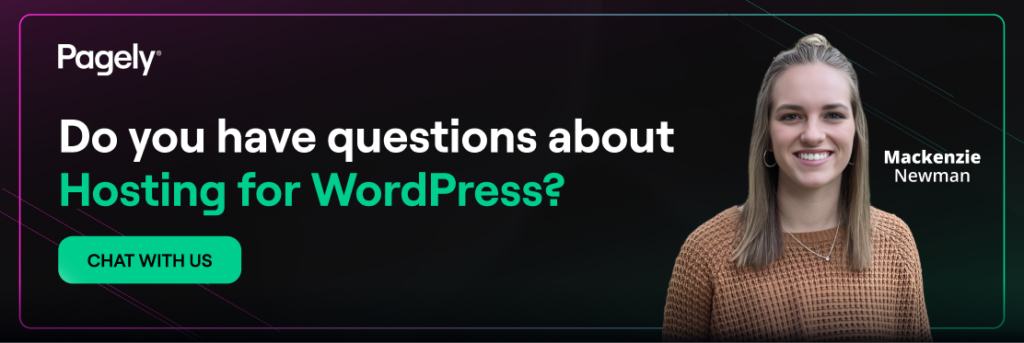
For businesses that run their revenue through WordPress, hosting is not a simple commodity purchase. One outage during a new product launch or one sloppy security layer during a compliance audit and the monthly hosting bill suddenly looks microscopic compared with lost sales or fines. That is why the conversation has shifted from “How cheap can I host my site?” to “Which hosting plans actually keep my WordPress site safe, fast and profitable?”
Yet the marketplace is cluttered with buzzwords. Marketing pages toss around phrases like “blazing-fast” or “enterprise-grade” without ever tying those claims to measurable outcomes. We’ve migrated enough sites to know the gap between headline features and day-to-day reality. The good news is you can cut through the noise by focusing on the handful of plan characteristics that consistently drive business results.
This guide breaks down the main types of WordPress hosting plans, highlights the technical features that deserve your attention, and shows you how to weigh cost against value. By the end, you should be able to scan any list of WordPress website hosting plans and immediately see whether they fit your needs or just padding a spec sheet.
Types of WordPress hosting plans
Shared WordPress hosting
Shared hosting puts dozens or hundreds of unrelated sites on one server. The appeal is obvious: low entry-level pricing. For hobby blogs or brochure sites with a few hundred visitors per month, a shared WordPress website plan might be acceptable. The catch is isolation, or lack thereof. CPU spikes from a neighbor, outdated PHP versions forced on the entire machine, and limited access to fine-grain caching layers all add up to uneven performance. Shared plans make sense only when downtime has no direct dollar impact. The moment pages per minute determine revenue, you have outgrown this tier.
Managed hosting
Managed hosting for WordPress combines isolated resources with a WordPress-aware operations team. You typically get automatic core updates, managed backups, tuned NGINX or Apache configs and built-in caching. With Pagely’s managed stack, for example, you also inherit AWS infrastructure, global CDN distribution and advanced security tooling. The result is predictable performance without hiring a full DevOps staff. Price points vary, but the real ROI comes from time saved on patching and troubleshooting. Agencies juggling dozens of client sites and SaaS companies iterating quickly both lean on managed plans because they convert sysadmin overhead into product velocity.
Dedicated WordPress hosting
Dedicated WordPress hosting means an entire physical server, or even a cluster, allocated only to your sites. You eliminate the “noisy neighbor” risk entirely. High-traffic publishers, large WooCommerce stores, and organizations bound by strict compliance mandates often choose dedicated plans for deterministic performance and audit-friendly isolation. Pagely’s dedicated WordPress hosting solutions pair this hardware commitment with managed services, so you benefit from both exclusive resources and expert oversight.
Key features to consider in WordPress hosting plans
Performance and speed
Page speed impacts conversion rate, search ranking and user satisfaction. When you evaluate WordPress hosting plans, look beyond SSD claims. Ask how many PHP workers are allocated per site, whether object caching is RAM-based (Redis or Memcached) and if a global CDN is included or an add-on. Investigate traffic burst handling: Does the host autoscale CPU and memory, or will a viral tweet throttle your checkout? Whatever provider you choose, insist on data, not adjectives.
Security features
The cost of a breach extends far past remediation. Think brand damage, legal exposure and churn. Effective WordPress hosting plans bake in security at several layers. Key items to verify:
- Web application firewall with WordPress-specific rules.
- Automated daily backups stored off-site for at least 14 days.
- Managed core, theme, and plugin updates (or at minimum monitoring and reporting).
- Security patch SLAs – How fast after a CVE is announced does the host update PHP or the OS?
- Role-based access control and MFA for the control panel
Pagely’s secure WordPress hosting wraps these requirements plus intrusion detection and a 24/7 incident response team. If your shortlisted vendor cannot articulate equivalent safeguards, keep it moving.
Comparing different WordPress hosting plans
Price versus features
Sticker price is easy to compare, but it’s the total cost of ownership where most budgets derail. A $30 entry-level plan with no staging environment forces teams to spin up their own test servers, negating the savings. Conversely, a $400 plan that includes a staging site, built-in CDN and expert support can remove three separate SaaS bills. Map every feature to an internal cost line: labor, third-party tools, potential revenue loss from downtime.
Customer support and uptime guarantees
When a site coughs at 2:00 AM on Black Friday, canned knowledge base articles won’t cut it. Review the SLA: Is uptime measured monthly or yearly, and how are credits calculated? Next, sample the support queue before you sign. Open a pre-sales ticket with a technical question and clock the response. At Pagely, every plan includes access to senior WordPress engineers. Direct access shortens incident MTTR (mean time to resolution), which directly preserves revenue. Uptime guarantees below 99.95% suggest infrastructure gaps you will eventually pay for.
Choosing the right WordPress hosting plan for your needs
Assessing your website requirements
Start with traffic profiles: average visits, expected spikes, and concurrency during peak campaigns. Layer on site complexity. A brochure site running a few static pages differs wildly from a WooCommerce store executing real-time stock checks. Finally, weigh compliance needs (HIPAA, GDPR, PCI) and internal staffing. If your team lacks server expertise, a self-managed VPS probably won’t cut it. Match each requirement to the hosting tier that delivers it with the least operational friction.
Future scaling and growth considerations
A smart hosting decision looks twelve months ahead. Can the provider add nodes without re-architecting? Is high availability an option when traffic triples? Our high availability solutions allow horizontal scaling and multi-AZ redundancy on AWS, meaning you grow without re-deploying. Even if your current budget caps you at a single node, choose a host whose plans share the same underlying platform across tiers, that way upgrades become a checkbox exercise instead of a full migration.
Making an informed decision on WordPress hosting
Selecting the right hosting environment is a risk management exercise masked as a technical purchase. You are balancing three forces: performance, security and operational overhead. Get it wrong and those forces work against you with sluggish pages eroding conversions, vulnerabilities turning into incident reports, and your developers burning cycles babysitting servers instead of shipping features.
Here is a simple checklist to kickstart your next evaluation:
- Quantify the business impact of downtime and slow pages. Translate milliseconds and minutes into real dollars.
- Rank non-negotiable security requirements. If your leadership team or industry mandates specific certifications, eliminate providers that cannot show evidence.
- Map hidden costs. Include developer time, add-on services, and potential penalties for SLA violations.
- Test support before purchase. A two-hour email response during the sales phase usually foreshadows worse when you are locked in.
- Verify upgrade paths. Today’s traffic may fit a basic plan, but tomorrow’s funding round could triple it overnight.
For organizations that need a straight line between hosting spend and revenue protection, managed or dedicated WordPress website hosting plans are rarely a luxury, they are a form of insurance with predictable premiums. Our catalogue spans managed, high availability and dedicated options, all running on proven AWS infrastructure. You can compare tiers on our Plan Comparison page or jump straight to pricing when you’re ready.
The hosting provider you choose becomes an extension of your team. Take the extra day to measure them by how well they safeguard your revenue and your reputation, not by how low they can set the monthly fee. Making that disciplined choice today saves you from the frantic, 2 a.m. server crisis that every veteran site owner eventually faces, and keeps your business moving forward.

